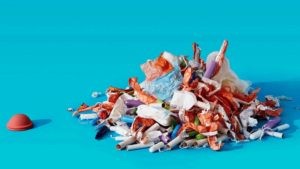Reusable vs. Disposable: The Eco Impact of Menstrual Products
Reusable vs. Disposable: The Eco Impact of Menstrual Products

Menstrual products are a basic necessity for millions of people around the world. But have you ever thought about their impact on the environment? Whether you use disposable pads and tampons or opt for reusable products like menstrual cups or cloth pads—your choice can make a big difference.
Disposable Menstrual Products: Easy but Harmful
Disposable pads and tampons are widely used because they’re convenient. However, they come at a cost to the environment. Most of these products contain plastic, synthetic materials, and chemicals. They are used once and thrown away—ending up in landfills or oceans, where they can take hundreds of years to decompose.
An average person may use more than 11,000 disposable menstrual products in their lifetime. That adds up to a huge amount of waste and also uses up resources like water, energy, cotton, and packaging materials during production.
Reusable Menstrual Products: A Sustainable Solution
Reusable products are designed to be long-lasting and eco-friendly. These include:
-
Menstrual Cups: Made from medical-grade silicone, they can last up to 10 years with proper care.
-
Cloth Pads: Washable and reusable, usually lasting several years.
-
Period Underwear: Comfortable and absorbent, they can be reused like regular clothes.
These products produce less waste, save money over time, and reduce the carbon footprint compared to disposables.
Benefits of Switching to Reusables
-
Eco-friendly: Less trash, less pollution
-
Cost-effective: One-time investment, long-term use
-
Safe: Free from harsh chemicals
-
Comfortable: Many users find them more breathable and gentle
Challenges and Considerations
-
Reusables need regular washing and hygiene care.
-
May not be convenient in areas with limited water access.
-
Initial cost may seem high, but pays off in the long run.
Conclusion
Both reusable and disposable products serve a purpose, and the best choice depends on personal needs and lifestyle. However, being aware of the environmental impact helps us make more responsible and sustainable decisions. Even small changes—like using a menstrual cup or cloth pad occasionally—can make a big difference for the planet.
Do charity
#BanoKisiKiMuskan
Be someone’s reason to smile
For Donation call us @ 9711364750
www.padindia.org
Send ur resume at
info@padindia.org
https://www.youtube.com/padindia
https://www.linkedin.com/company/padindia
https://www.facebook.com/Padvoice/
https://www.facebook.com/voiceofindiantaxpayers/